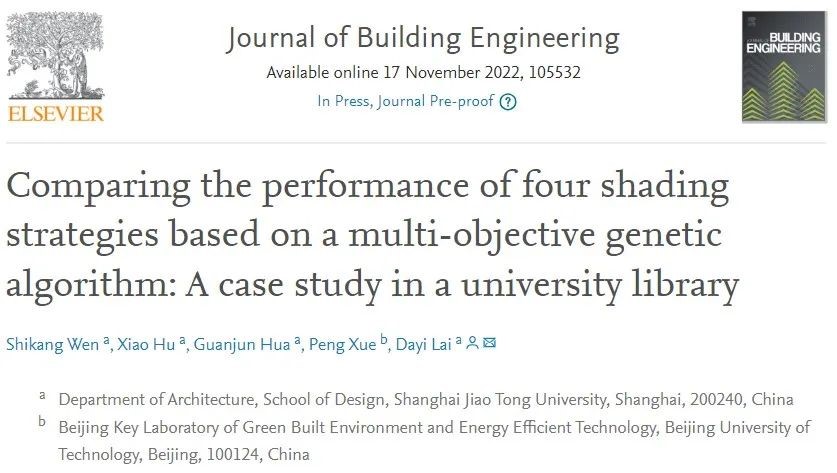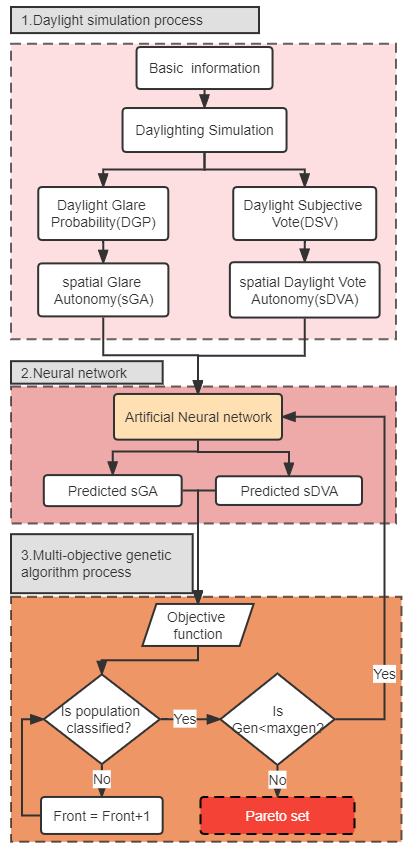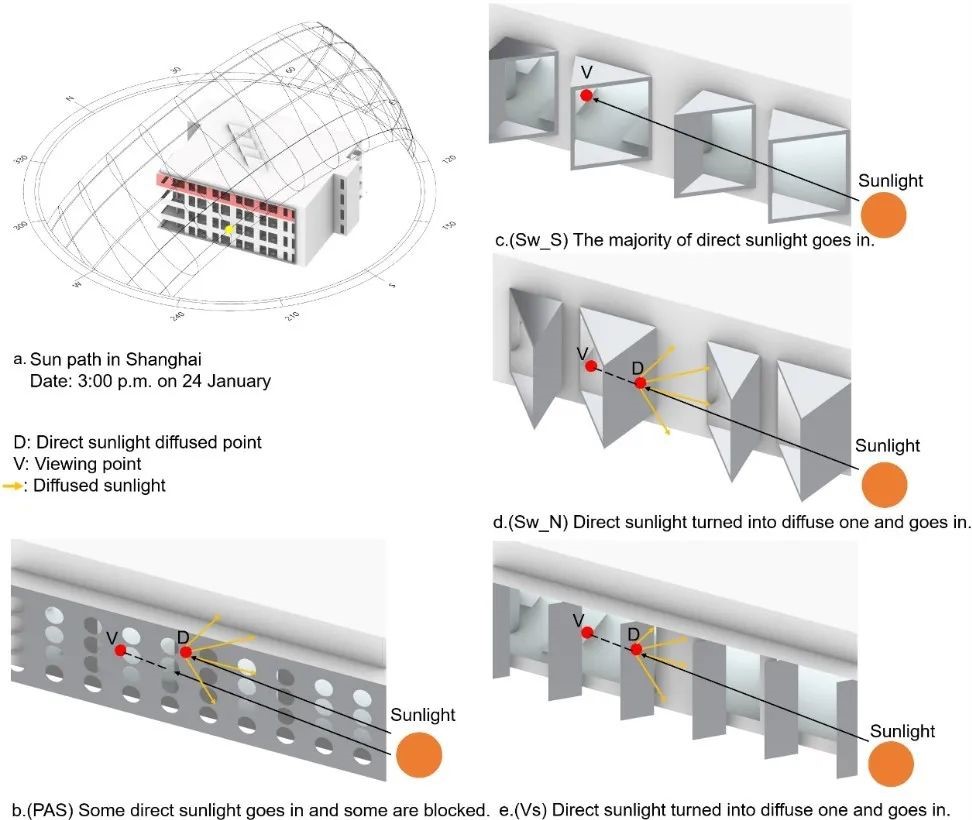
News & Events

News & Events

WEN Shikang, an undergraduate student from the Department of Architecture, School of Design, Shanghai Jiao Tong University, has published an academic paper “Comparing the Performance of Four Shading Strategies Based on a Multi-Objective Genetic Algorithm: A Case Study in a University Library” as the first author on Journal of Building Engineering. Based on the multi-objective genetic algorithm, this research proposes a method for selecting and designing building sun-shading strategies, and applies this method to the improvement design of a library’s light environment.
Abstract
Through the control of excessive daylight in buildings, shading devices can reduce glare and improve occupants' visual comfort. However, shading devices may overly reduce illuminance levels. Many shading strategies are available, but they do not perform equally well, and traditionally, it has been difficult to select the most suitable shading strategy. This study proposed a parameterization method for the selection and design of a shading strategy that would reduce glare while maintaining a satisfactory daylighting level, through the construction of Pareto sets based on a multi-objective genetic algorithm. The objective function was created by combining a dynamic glare evaluation indicator, the spatial glare autonomy (sGA), and a self-constructed daylight index, the spatial daylight vote autonomy (sDVA), developed from a field survey. As a case study, the proposed method was used to compare the performance of four shading strategies, including vertical slats (Vs), a perforated aluminum sheet (PAS), serrated windows with southern orientation (Sw_S), and serrated windows with northern orientation (Sw_N) in a university library in Shanghai, China. It was found that the Sw_S and PAS had a relatively bad performance; the Vs performed better than the Sw_N in providing a more satisfactory illuminance level; and the Sw_N was more effective in reducing the glare. The multi-objective optimization process can be used to obtain near-optimal design parameters that create a visual environment with reduced glare while maintaining an acceptable illuminance level, for all four shading strategies. The developed method can be a helpful tool in the design of an appropriate daylighting environment.



SCHOOL OF PHARMACY,SJTU
Address: 800 Dongchuan Road, Shanghai
200240